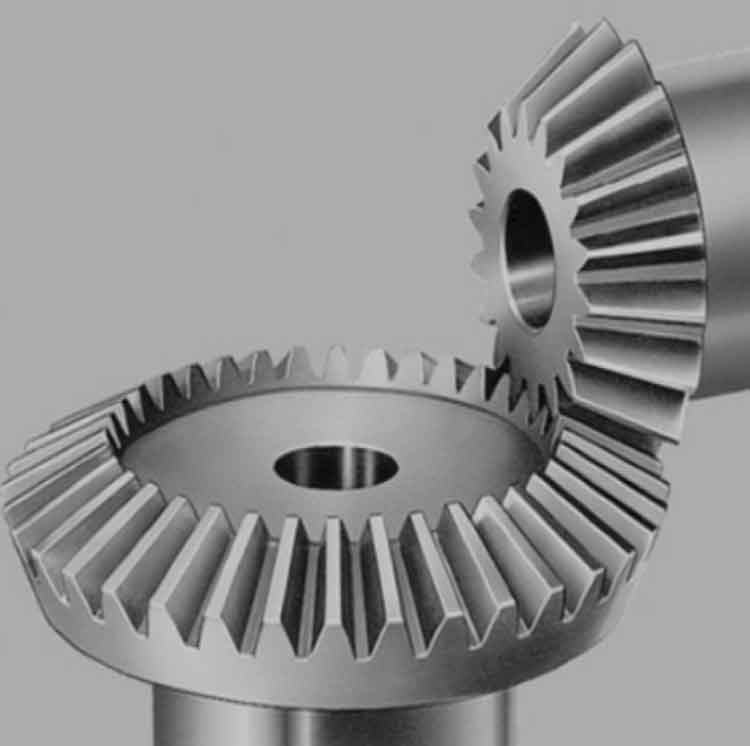
Straight bevel gears play a crucial role in various industrial machinery applications, contributing to the overall performance and reliability of the systems. These gears are used to transmit power and motion between intersecting shafts, enabling efficient torque transfer, speed reduction or increase, and direction changes. By understanding their characteristics and implementing appropriate design and maintenance practices, one can enhance the performance and reliability of industrial machinery that incorporates straight bevel gears.
Proper Gear Design:
- Tooth Geometry: Optimal tooth profile design is essential for smooth operation and efficient power transmission. The involute tooth profile is commonly used for straight bevel gears due to its favorable characteristics, including uniform load distribution, lower noise generation, and improved contact ratio.
- Gear Ratio and Module: Selecting the appropriate gear ratio and module (size of gear teeth) based on the application requirements is crucial. This ensures that the gears can handle the required torque and load while maintaining an acceptable level of contact stress and backlash.
- Material Selection: Choosing the right material for the gears is important for reliability and durability. Factors to consider include strength, hardness, wear resistance, and heat treatment capabilities. Common materials for bevel gears include alloy steels, carburizing steels, and case-hardened steels.
Lubrication:
- Adequate lubrication is critical for reducing friction, preventing wear, and dissipating heat in gear systems. Proper lubrication selection, based on factors such as operating conditions, load, and speed, is essential. Regular oil analysis and monitoring should be performed to ensure the lubricant’s quality and detect any contaminants or degradation.
Alignment and Mounting:
- Precise alignment of bevel gears during installation is crucial for optimal performance and to avoid premature failure. Accurate alignment minimizes misalignment-induced forces and ensures uniform load distribution across the gear teeth. Proper mounting techniques, such as appropriate shaft and bearing selection, are also important for reliable operation.
Maintenance and Inspection:
- Regular maintenance and inspection procedures should be implemented to identify and address any potential issues before they escalate. This includes monitoring gear wear, tooth damage, backlash, and any abnormal noise or vibration. Planned maintenance intervals should be established based on the gear system’s operating conditions and manufacturer’s recommendations.
Shock and Overload Protection:
- Industrial machinery may encounter shock loads or occasional overloads during operation. To enhance performance and reliability, incorporating shock-absorbing elements such as flexible couplings, dampers, or overload protection devices can help mitigate the impact on straight bevel gears and prevent sudden failures.
Monitoring and Condition-Based Maintenance:
- Implementing condition monitoring techniques such as vibration analysis, temperature monitoring, and oil analysis can provide valuable insights into the health and performance of the gear system. By detecting early warning signs of potential failures or performance degradation, proactive maintenance strategies can be employed, minimizing downtime and improving reliability.
Training and Expertise:
- Ensuring that personnel responsible for operating, maintaining, and repairing industrial machinery are properly trained and knowledgeable about straight bevel gears is crucial. Training programs and access to expert resources can empower the workforce to make informed decisions, troubleshoot problems effectively, and implement best practices for gear system optimization.
By considering these factors and implementing appropriate design, maintenance, and operational practices, one can enhance the performance and reliability of industrial machinery that incorporates straight bevel gears, ultimately leading to increased productivity, reduced downtime, and improved overall efficiency.
